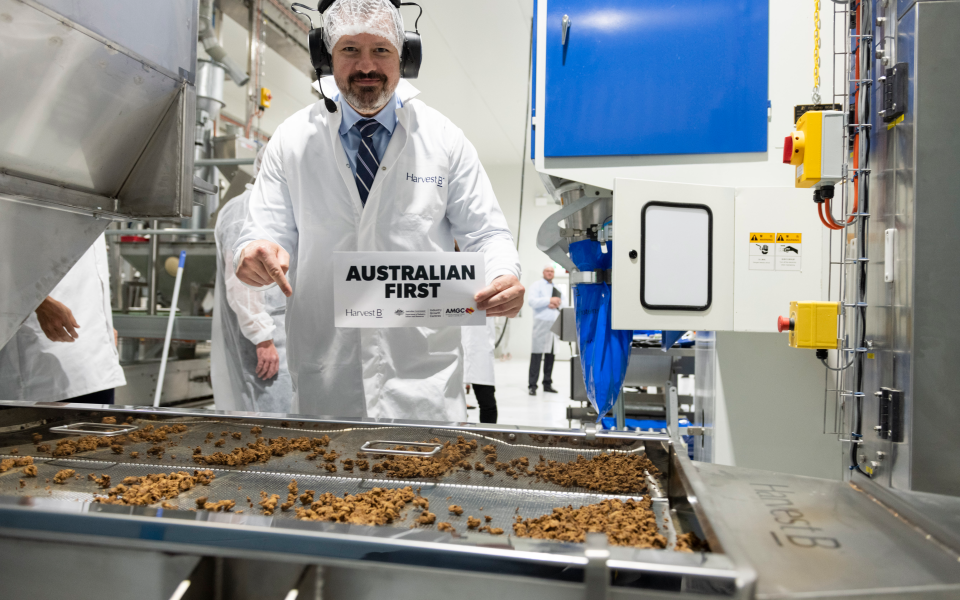Plant proteins start off as clumpy and poorly hydrated. Water is added and they are heated. The proteins change shape and trap water around themselves, creating a gel. That gel is broken up into a plant protein microgel, with plant protein particles surrounded by water. Credit: Ben Kew, University of Leeds
One of the main hurdles to the acceptance of plant-based meat alternatives is their dry and astringent texture when consumed.

A team of scientists, led by Professor Anwesha Sarkar at the University of Leeds, is revolutionizing the experience of plant proteins by transforming them from a gloopy and dry substance into one that is juicy and fatty, using only water.
Plant protein microgels
To achieve this breakthrough, the scientists developed plant protein microgels through a process called microgeletion.
Initially, plant proteins, which are dry and rough in texture, are immersed in water and subjected to heat. This alters the structure of the protein molecules, causing them to form a connected network or gel that traps water around the plant proteins.
The gel is then homogenized, breaking the protein network into tiny particles that are not visible to the naked eye. When subjected to pressure, such as when eaten, the microgels release water, creating a lubricating texture similar to single cream.

Professor Sarkar explains, “What we have done is convert the dry plant protein into a hydrated one, using the plant protein to form a spider-like web that holds the water around the plant protein.”
“This provides the much-needed hydration and juicy sensation in the mouth.”
“Plant-based protein microgels can be created without the use of any additional chemicals or agents, using a widely available technique currently used in the food industry. The key ingredient is water.”
** Click here to read the full-text **










